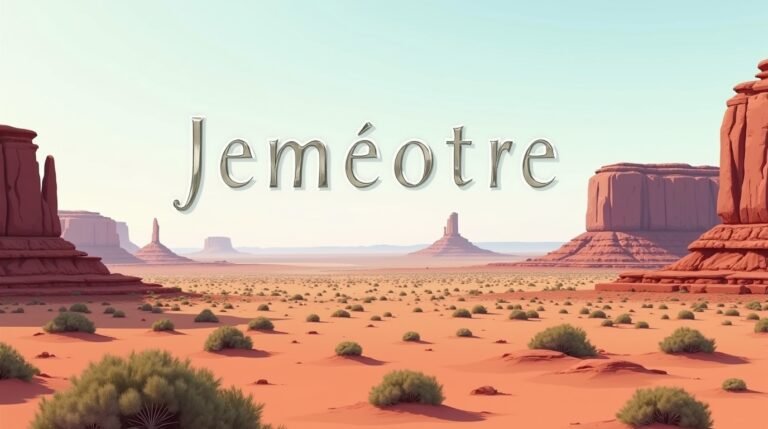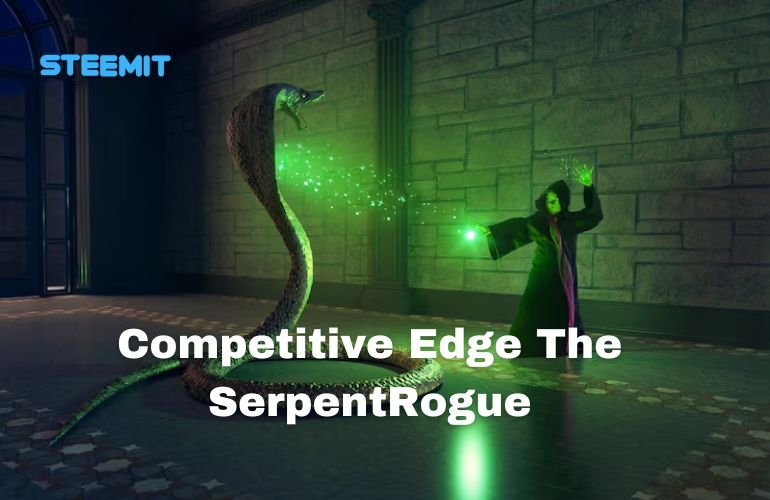What is Jememôtre?
Jememôtre blends strong feelings, historical interest, and modern digital expression. The word isn’t in traditional dictionaries, but it’s becoming popular. People use it in creative, therapeutic, and online spaces. It symbolizes self-awareness and emotional reflection. Jememôtre comes from French. “Je me” means “I myself.” “Memo” refers to memory. “Môtre” sounds like “nôtre” (ours) or “mètre” (measure). The phrase feels poetic and thoughtful: “I measure myself” or “I reflect on my memory.”
Its aesthetic tone and abstract style appeal to poets, artists, and digital thinkers. This article covers key aspects of jeme mjeme gaugetre. It looks at its language roots, emotional value, digital uses, and cultural impact. This guide is for anyone looking for meaning, healing, or change in our fast-paced world.
The Origins and Etymology of Jememôtre
The etymology of jememôtre is key to grasping its complex nature. Jememôtre isn’t in official language databases or linguistic institutions. It seems to be a neologism, or a new word created from cultural needs and emotional use. Its parts come from French. “Je me” means “I myself,” showing introspection or personal ownership. The word “mémo” suggests memory or recollection. It hints at remembering or reflecting on one’s life.
Finally, “môtre” connects to words like “nôtre” (ours) and “mètre” (measure). This links to themes of shared experiences and self-evaluation. The term’s layered design adds depth. This makes it more complex than regular psychological or wellness terms. It is a word born from our need to share feelings and stories. It aids in tracking emotional growth and allows for poetic and inclusive self-expression.
Cultural and Psychological Significance of Jememôtre
Jememôtre isn’t a catchy phrase. It symbolizes personal change and emotional growth. In a cultural sense, this term describes people who value self-reflection and growth. This is important in a time filled with outside approval and constant distractions. Artists, philosophers, and writers use the idea of jeme môtre. It captures those quiet moments when we learn something key about our lives or ourselves. It’s about taking a moment to pause and think. You recognize change and see internal milestones. These milestones are often unseen by others. Jeme môtre connects well with mindfulness, metacognition, and narrative therapy in psychology.
It gives people a space to process feelings, change their stories, and find meaning in the past. By naming these inner processes, jeme môtre becomes a practice and a tool. It’s a gentle yet strong way to explore who we are, how we’ve grown, and how we can keep evolving. It empowers users with emotional vocabulary that heals, expresses, and provides deep validation.

The Historical Roots and Ritual Usage (Mythical and Allegorical)
Jememôtre is a modern term, but it draws from ancient rituals and spiritual practices. Its roots lie in allegorical traditions. In many native and old cultures, people took part in rites of passage. These ceremonies marked key life changes. They exhibited becoming an adult, mourning, and personal revelation. These rituals comprised tales, self-reflection, and group sharing. These are also key topics of jememôtre.
We can’t link jeme môtre to one culture, but it echoes historical practices. These practices let people “measure” their spiritual or emotional state through symbolic acts. Mythical stories worldwide feature characters on internal journeys. These journeys show Jeme Môtre’s main ideas: self-discovery, redemption, acceptance, and rebirth. These yarns offer more than fun. They helped us grasp identity, emotion, and what it means to be human. Today, jeme môtre presents a fresh take on ageless principles. It urges people to engage in personal reflection and shift. You can do this through writing, meditation, or drawing.
Jememôtre in the Digital Age
The digital world has offered fertile ground for the spread and evolution of jememôtre. In a world full of quick entertainment and shallow ties, jememôtre offers a refreshing change. Platforms like Tumblr, Pinterest, Medium, and Instagram are now popular for this term. Users who enjoy reflective content often gather there. In these contexts, jememôtre turns into a modern digital journal. It captures insights and emotional milestones in a world that rarely slows down.
Some wellness and productivity platforms name tools that track habits, moods, and growth. These digital tools combine self-expression and functionality. They offer features like mood charts, inspirational prompts, and customizable dashboards. What makes jeme môtre unique online is its blend of usefulness and emotion. It focuses on productivity, but also on purposeful progress, beauty, and personal meaning.
How to Practice Jememôtre in Daily Life
Practicing jememôtre doesn’t need any formal structure, which is part of its charm. For beginners, simple habits can help a lot. Journaling each morning helps you check in with your feelings. This can form a strong base. Writing down your feelings, thoughts, and aims opens a conversation with yourself. Weekly musings also provide a portal to test patterns or celebrate quiet wins.
Across time, these habits become rituals of self-care and growth. Advanced practitioners can integrate jeme môtre into meditation or therapy sessions. A popular method is to write a letter to your past or future self. Use jememôtre to track your emotional growth. Explore visual journaling, audio logs, or creative art projects. They can help you express your inner journey. The beauty of jeme môtre is its flexibility. You can alter it to fit your lifestyle, pace, and go-to medium. Its goal is clear: to build insight, intention, and a deeper bond with yourself.
Artistic and Creative Representations of Jememôtre
Art and creativity are natural companions to the concept of jememôtre. Many artists now use this term as a theme. They explore memory, identity, and transformation through their work. Abstract painters use colors and textures to show emotional growth. Poets craft their verses around moments of self-discovery. Spoken word artists and multimedia installations now use jememôtre. They create immersive experiences that mimic the journey of remembering, understanding, and healing. You might visit a gallery exhibit called “Jememôtre.” There, layers of light, sound, and motion greet you. They bring to life the emotional landscapes we all hold inside.
Jememôtre provides a useful guide for writing autobiographical blogs and memoirs. These stories focus on honesty, not achievement. They highlight flaws, encourage growth, and promote self-understanding. Jememôtre invites creators to find meaning, whether in a verse or an image. Reflect and create.
Jememôtre vs. Traditional Self-Tracking or Reflection Tools
Many self-tracking tools are available, like productivity apps and journaling software. Jeme Montre stands out. It emphasizes emotion, personalization, and artistry. Traditional trackers focus on basic functions. They count steps, track calories, and measure output. Jeme Montre, by contrast, asks a different question: “How does this make me feel?” It is less concerned with numerical metrics and more invested in emotional insights.

A typical habit tracker might ask if you meditated today. Jeme môtre goes further. It encourages you to think about what you experienced during your meditation. Its design, whether digital or analog, often uses poetic language. It offers customizable formats and expressive prompts. We encourage users to integrate drawings, quotes, mood tags, or voice reflections. This emotional depth and creative input form a fuller, richer picture of the self. It’s complete, not understated. It transforms personal evolution into an art form, one that is as much about the process as the effect
Community and Global Adoption of Jememôtre
Jememôtre isn’t limited to one language or area. People worldwide are embracing it, meeting the varied needs and voices of today’s users. In online spaces with French, English, and digital slang, the term has a universal feel. People from various cultures interpret it in their own ways, giving the term new life with each usage. Mental health advocates and educators use jememôtre in workshops and group talks. It helps people connect more with their emotions.
Creative groups have held themed exhibits or writing challenges centered on the concept. In varied societies, identity can be fluid and complex. Here, jeme môtre serves as a unifying framework for reflection. It connects the personal with the collective. This lets people express their true selves. They can share their thoughts and feelings with intensity.
Future of Jememôtre – Where is it heading?
The future of jememôtre holds exciting potential. As culture values emotional intelligence, authenticity, and mental well-being. So, jememôtre is key for personal growth. See new platforms, journals, and apps focused on the jememôtre philosophy. These tools will focus on beauty, self-reflection, and community. They won’t rely on complex data analytics.
Instructors can use this practice in lessons about creative writing, emotional insight, or cultural studies. Therapists could integrate jememôtre techniques into narrative therapy or guided journaling. AI is growing. Emotional journaling tools that follow jeme môtre principles can link self-expression to digital well-being. Jememôtre isn’t just a word; it could spark a movement. It can inspire people to slow down, reflect, and connect. By sharing their vulnerabilities and truths, they can bond with others.
Conclusion
In today’s busy world, jememôtre offers a space for pause, thought, and renewal. It calls to mind that self-growth isn’t about being perfect. It’s about understanding ourselves and evolving. Jeme môtre encourages people to look within, share their feelings, and find deeper meaning. This style answers a rising cultural request for mindfulness and authenticity.
It is not a trend but a timeless tool—one that invites us to witness our lives with deeper fullness and love. In a world filled with automation and digital noise, the soul voice at jememôtre stands out. It’s growing louder and more essential. It’s an invitation to see what moves us, the flashbacks that shape us, and the thoughts that guide us. Jeme môtre is not only a word—it is a way of being.





